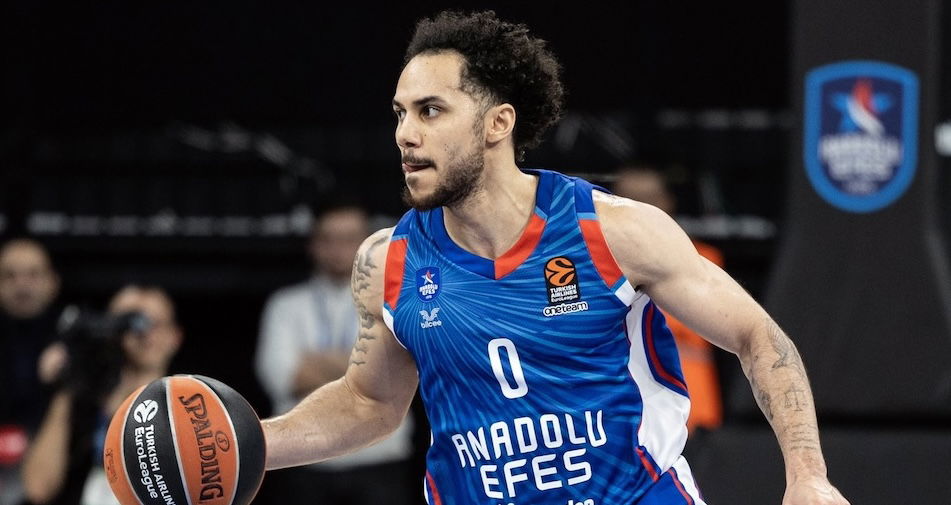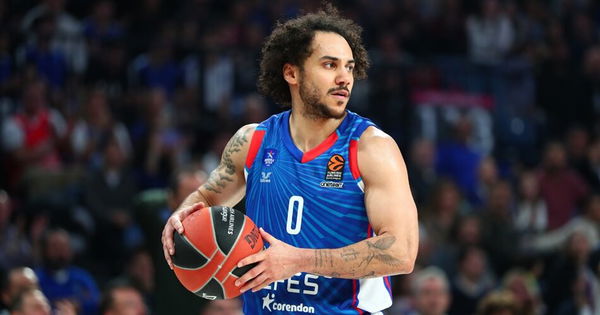
Imago
Credits- Eurohoops

Imago
Credits- Eurohoops
International basketball competitions like EuroBasket feature complex eligibility rules that often determine which players can represent which countries. The term “naturalized player” appears frequently in tournament coverage, yet many fans remain unfamiliar with its specific meaning and implications.
Watch What’s Trending Now!
FIBA classifies players into locals, dual citizens, and naturalized players, each with its own criteria. A passport before age 16 places a player in the local pool, while a passport after 16 means naturalized status. There is also a strict cap, since only one naturalized player can be on a 12-man roster for official competitions. All of this sets the stage for a rule that keeps shaping rosters every summer.
Basket News added fuel to the discussion this week with an Instagram post that ranked the top five naturalized players heading into EuroBasket 2025. The list placed Shane Larkin of Turkey at number one, followed by Jordan Loyd of Poland, Tyler Dorsey of Greece, Darius Thompson of Italy, and Kamar Baldwin of Georgia.*
ADVERTISEMENT
View this post on Instagram
That ranking gave fans a clear picture of who headlines this year’s naturalized field, but it also turned attention back to the rule itself. FIBA Secretary General Andreas Zagklis has been very firm on its importance, saying “As a rule, the Central Board is clear: one naturalized player per team. This is the No. 1 principle that I do not see changing”.
Larkin, who switched from the NBA to become a two-time EuroLeague champion with Anadolu Efes, has been representing Turkey since 2020. His coach Ergin Ataman confirmed “Shane will be with us… he wants to help Turkish basketball too much”. Loyd only became eligible for Poland this year, acquiring his passport in Paris before joining the national squad.
ADVERTISEMENT

ADVERTISEMENT
Dorsey carries Greek heritage but because of FIBA classification still counts as naturalized despite a long presence in Greek basketball. Thompson married an Italian citizen and got his passport in 2024, while Baldwin, originally from Georgia in the United States, made his Georgian national team debut after earning citizenship late last year. Each case looks different, but the same one-player limit applies.
The list also highlights how valuable these additions can be. Larkin holds the EuroLeague single game scoring record at 49 points. Loyd just wrapped up a season in Monaco averaging nine points per game across 33 EuroLeague matches. Dorsey dropped 27 points in Greece’s EuroBasket 2022 opener against Croatia. Thompson led the EuroLeague in assists with 6.7 per game during the 2022-23 season. Baldwin has already shown his ability to lead by example for Bayern Munich in Germany. For fans, these names are not just late passport holders but proven talents who can tilt a game when it matters, and that is why this FIBA rule always sparks interest.
ADVERTISEMENT
So as EuroBasket 2025 approaches, the naturalized player rule will keep drawing focus. But naturalization is not the only tricky regulation in the FIBA handbook. Several other lesser-known rules are equally impactful, and they quietly shape how international basketball is played year after year.
Some other lesser known FIBA rules for players
One of the most overlooked rules is the 10-year residency exemption. It allows a player to avoid the naturalized tag if they lived in a country for at least ten years before turning 16, while also completing their schooling there. This rule has been used in the Philippines, with names like Greg Slaughter and Chris Newsome benefiting from it, and it has opened the door for others still in the process. The catch is that the residency has to be continuous, which keeps it from becoming an easy loophole.
ADVERTISEMENT
Another rule worth noting is the irrevocable national team choice system. Once a player suits up in an official FIBA event after age 17, that decision sticks forever. They cannot switch to another country no matter what. The only exceptions come from rare approvals by the FIBA Secretary General. This gained attention when Eric Gordon was allowed to move from Team USA to the Bahamas in 2023, a rare case that proved how strict the system usually is. For most players, once the jersey is worn, there is no going back.

Imago
Oct 14, 2024; Atlanta, Georgia, USA; Philadelphia 76ers guard Eric Gordon (23) drives to the basket against the Atlanta Hawks in the first quarter at State Farm Arena. Mandatory Credit: Brett Davis-Imagn Images
Finally, the dual citizenship rule is another common hurdle. Even if a player has family roots in a country, FIBA requires that they claim that nationality through a passport before turning 16. If they miss the deadline, they are automatically classified as naturalized no matter what. Jordan Clarkson’s case is a familiar example, as he remains listed as a naturalized player for the Philippines despite his heritage. These deadlines make planning essential for federations and players, because paperwork timing can sometimes matter as much as talent itself.
ADVERTISEMENT
ADVERTISEMENT
ADVERTISEMENT
ADVERTISEMENT

